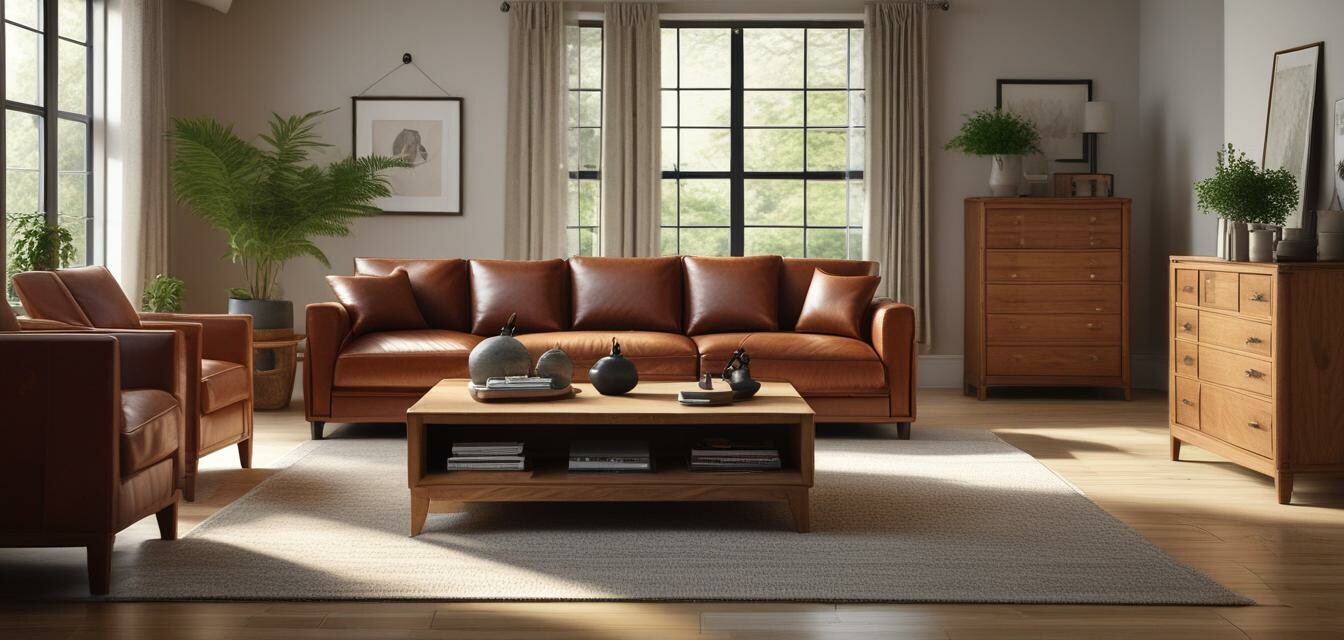
Mixing and Matching: Pairing Solid Oak with Different Wood Types
Key Takeaways
- Mixing different wood types can enhance your home's aesthetics.
- Solid oak offers a versatile base for various styles and finishes.
- Understanding wood tones is crucial for an appealing look.
- Layering textures can add depth to your decor.
- Balance is key when mixing woods to maintain cohesion.
Combining different wood types in your home decor can create an inviting and dynamic aesthetic. Solid oak, known for its durability and stunning grain patterns, pairs beautifully with various woods like walnut, pine, or maple. In this article, we will explore creative ideas for mixing solid oak furniture with other wood types, adding depth and character to your home decor while ensuring cohesion.
Understanding wood tones
Before diving into specific combinations, it's essential to understand the tones of different wood types. Here's a brief overview:
| Wood Type | Color Tone |
|---|---|
| Solid Oak | Warm, golden tones |
| Walnut | Rich, dark chocolate tones |
| Pine | Light, creamy, and yellowish tones |
| Maple | Light beige and soft brown tones |
Creative combinations to try
1. Mixing solid oak with walnut
Pairing solid oak with walnut creates a warm contrast. The rich, dark tones of walnut can highlight the golden hues of oak, lending a sophisticated vibe to your space.
2. Pairing solid oak with pine
The lightness of pine brings a fresh, airy feel when combined with solid oak. This combination works particularly well in casual or rustic settings.
3. Blending solid oak with maple
Maple's light tones can complement the warm richness of oak, creating a harmonious environment. Use this pairing for a modern and minimalistic approach.
Layering textures
To enhance the visual appeal when mixing woods, layering different textures is key. Here are a few tips:
- Incorporate textiles like cushions and throws with various patterns.
- Use decorative elements such as woven baskets or natural fiber rugs.
- Consider mixing finishes like matte and glossy to create a contrast.
Maintaining balance
Balance when mixing different wood types is essential for creating a cohesive look. Here are some guidelines to help you:
- Choose a dominant wood: Let solid oak be the foundation piece, such as a dining table or main furniture item.
- Limit the variety: Stick to two or three types of wood to avoid overwhelming your decor.
- Consult the color wheel: Referencing the color wheel can help you select complementary tones.
Accessorizing your mix
Accessorizing correctly can tie your different wood combinations together. Here are some ideas:
- Use decor items like wooden picture frames or serving trays that incorporate similar tones.
- Accent with candles in natural holders that complement your wood finishes.
- Implement plants with earthy ceramics or wooden pots to merge with the furniture appeal.
Conclusion
Mixing and matching solid oak with different wood types can elevate your home decor into a stunning showcase of style. Understanding wood tones, layering textures, and maintaining balance are the keys to achieving a cohesive look. Don’t hesitate to experiment with various combinations, and enrich your space with warmth and character! For more inspirations on integrating solid oak tables into your home, check out our Home Decor Inspiration category.
Pros
- Enhances visual depth and interest in spaces.
- Allows for personalization and creativity in decor.
- Complementary wood types can highlight unique features of solid oak.
Cons
- Requires an eye for color and tone matching.
- Mixing too many wood types can create chaos rather than cohesion.
- May not suit every decor style, particularly minimalistic designs.
For further reading on how to style specific spaces with oak furniture, check out our Buying Guides for detailed tips and tricks.